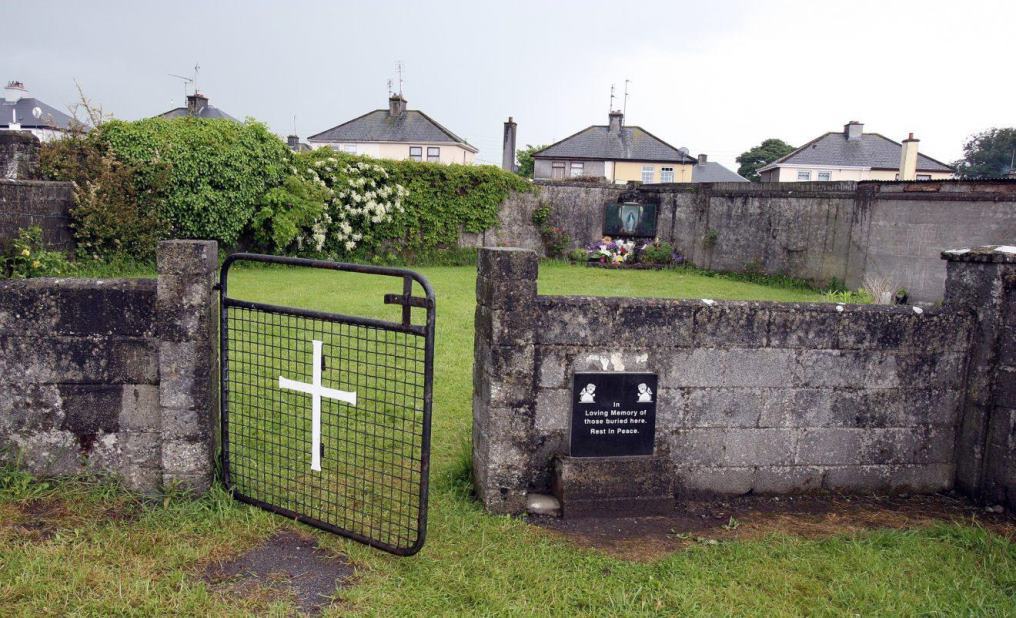|
Ireland to apologize for massive abuse at ‘mother and baby homes’
By Shawn Pogatchnik
Report found that approximately 9,000 newborns, infants and young children died at facilities across the country. Unmarried mothers and their infant children suffered cruel and often lethal neglect in Ireland’s so-called mother and baby homes, a five-year state investigation has concluded. Prime Minister Micheál Martin said he would issue an official apology to the survivors of the institutions following Tuesday’s publication of the final report from the Commission of Investigation Into Mother and Baby Homes. It examined conditions and policies at 18 such homes where Ireland sent 56,000 women with out-of-wedlock pregnancies from the 1920s to the 1990s. Martin said the 3,000-page report details “a deeply misogynistic culture” that doomed thousands to speedy deaths or lifetimes of regret. “We did this to ourselves,” he said. “We had a completely warped attitude to sexuality and intimacy, and young mothers and their sons and daughters were forced to pay a terrible price for that dysfunction. We embraced a perverse religious morality and control which was so damaging … All of society was complicit in it.” Martin said he would make a formal apology on behalf of the state in Dáil Éireann, Ireland’s lower house of parliament, on Wednesday. He called on Catholic religious orders that “behaved so badly” to do the same. Martin said church authorities “imposed a very perverse moral code in relation to sexuality and in my view fatally undermined the dignity of every human being.” Referring to the report’s findings, he said: “You don’t have Christianity in evidence here. The role of the state is complicit. It’s neglectful.” Over the course of the past two decades, state-ordered probes have documented abuse of women and children in mostly Catholic Church-run institutions. These included residential schools, workhouses, orphanages and so-called Magdalene laundries, where unwed mothers who had given up or lost their children spent their days in prayer and unpaid menial tasks. Tuesday’s report found that approximately 9,000 newborns, infants and young children died at the facilities from 1922 — the year that most of Ireland gained independence from Britain — to the mid-1960s when Ireland started to modernize its economy and improve living standards. The last of the residences, mostly run by Catholic nuns with lax state oversight, closed in 1998. Ireland launched the inquiry after Catherine Corless, an amateur historian in Tuam, County Galway, in 2014 compiled death certificates from one of the 18 homes indicating that nearly 800 children had been buried in unmarked graves on that site alone. Martin praised Corless as “a tireless crusader for dignity and truth.” Investigators in 2017 found the remains of infants at the Tuam site, mostly dating back to the 1930s and 1940s, a time when infections and disease spread easily in the unheated and overcrowded buildings. Children and mothers who died in the facilities were usually interred on-site with no memorials. The investigators, led by Judge Yvonne Murphy, stressed that the blame for the women being sent to these homes lay in the first instance with their own families and estranged male partners, who rejected responsibility for the woman and child. “It must be acknowledged that the institutions under investigation provided a refuge — a harsh refuge in some cases — when the families provided no refuge at all,” the report found. “There is no evidence that women were forced to enter mother and baby homes by the church or state authorities. Most women had no alternative,” it said, adding: “In many cases, they were cut off from the world and some were assigned a ‘house name.’ The mother and baby homes gave women some assurance that their secret would be protected.” But once inside the homes, the report found, the women often were denied basic human rights and their offspring faced a one-in-seven chance of dying from disease or illness driven by unsanitary conditions, cold and malnutrition. “The death rate among ‘illegitimate’ children was always considerably higher than that among ‘legitimate’ children, but it was higher still in mother and baby homes,” the report said, noting that deaths inside the homes immediately after World War II were “almost twice that of the national average for ‘illegitimate’ children.” “In the years before 1960, mother and baby homes did not save the lives of ‘illegitimate’ children; in fact, they appear to have significantly reduced their prospects of survival,” it said. The mothers commonly were separated from their surviving children, who ended up as boarders in workhouse-style industrial schools or as farm laborers. From 1952 onward, when Ireland enacted its first adoption laws, this became a more common escape route for thousands of children born in the homes. The report found this included at least 1,638 children who were adopted by overseas couples, mostly in the United States, in a process overseen by Catholic bishops and not covered by Irish law. Some homes facilitated vaccine trials on children in which no consent was sought from their mothers or guardians. The commission found that subjecting children to such tests — involving seven vaccine trials during periods stretching from 1934 to 1973 — was unethical and violated legal requirements in place at the time, but the trials had not been proven to have harmed any children involved. The government pledged to pursue the commission’s recommendations, which include providing financial compensation and medical support for those former residents still alive. Martin said the government intends to excavate sites and erect memorials to the documented dead at each location. This could involve individual reinterments and DNA testing to match remains with still-living mothers or siblings, a process that would take many years.
|
.
Any original material on these pages is copyright © BishopAccountability.org 2004. Reproduce freely with attribution.
